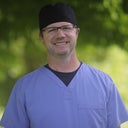I want to tighten the jaw line and get my lower face in more of a V-shape. I do not want my mid face tightened unless it is necessary for tightening the lower part. I am so confused with the lower mini facelift options. Does the Biltmore lift also lift underlying tissue? One Dr. on RS explained the Biltmore lift as "short flap facelift" or "Signature Lift", does this mean it does not tighten underlying tissue? Do I need underlying tissue tightened for jaw line improvement?
Answers (7)
From board-certified doctors and trusted medical professionals
More SMAS Facelift Questions
See all SMAS Facelift Q&AWE SEND PRETTY
EMAILS
What’s trending? Who’s turning heads? Which TikTok myths need busting? We’ve got you. No fluff, no gatekeeping—just real talk. Get our free, unfiltered newsletter.


